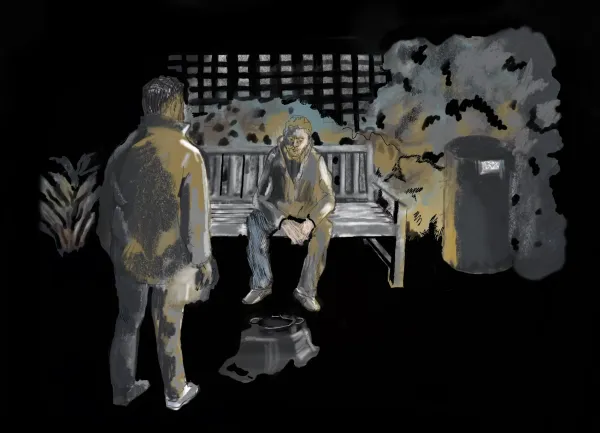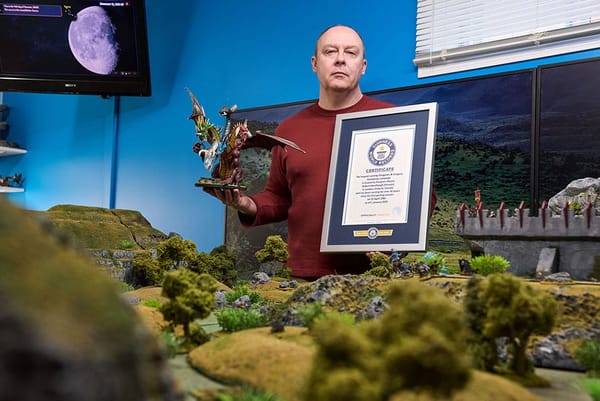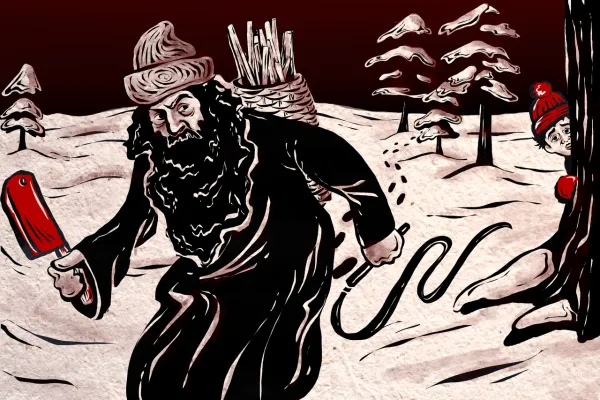A painting stolen by Nazis was spotted in a real estate listing

From The Guardian: "More than 80 years after it was looted by the Nazis from a Jewish art dealer in Amsterdam, a portrait by an Italian master has been spotted on the website of an estate agent advertising a house for sale in Argentina. A photo shows the painting, Portrait of a Lady (Contessa Colleoni) by the late-baroque portraitist Giuseppe Ghislandi, also known as Fra’ Galgario, hanging above a sofa in the living room of the property, in a seaside town near Buenos Aires. The Dutch newspaper AD said it had traced the work, which features in a database of lost art and is listed by the Dutch culture ministry as “unreturned” after the second world war, after a long investigation – and with the unwitting help of the estate agent. Portrait of a Lady belonged to Jacques Goudstikker, a leading Dutch art dealer who fled the Netherlands in mid-May 1940 to escape the invading Nazis but died after falling and breaking his neck."
The name of this Mexican peninsula translates as "I don't understand"

From Now I Know: "The Yucatán Peninsula, circled above, is a peninsula in Mexico, dividing the Gulf of Mexico from the Caribbean Sea. In 1517, conquistador Francisco Hernández de Córdoba launched the first notable expedition to the Yucatán, and asked the Mayans where they were. It’s unknown what they actually said, but transliterated, it’s likely one of the following words or phrases: “mathan cauyi athán“, “tectecán“, “ma’anaatik ka t’ann” or “ci u t’ann.” Say those aloud and you’ll kind of, sort of hear the word “Yucatán” in there. And that’s what de Córdoba probably heard, so he gave that name to the region.” That’s all fine and good — if the Mayans were answering de Córdoba’s question the way he thought they were, with the name of their country. But they almost certainly weren’t. Those phrases mean, roughly, “I don’t understand.”
How a shock absorber from a Volkswagen van became the world's best dog toy

From Why Is This Interesting: "It’s 1970. A guy named Joe Markham is operating a garage in downtown Denver, which at the time was plagued by burglaries. The local police were unable to provide much in the way of protection except for a bit of advice: Every good junkyard has a dog. Turns out Joe knew of a dog in need of a home who might fit the bill — a German shepherd named Fritz, who was originally destined to become a K9 officer with the Denver Police Department, except for one problem — Fritz could not stop chewing. Fritz would chew anything — dog bones, radiator hoses, even rocks. The last one got Joe worried, as Fritz’s obsessive rock chewing was wearing down his teeth. Then one day, as the legend goes, Joe was tearing down the suspension of a customer’s late 60’s VW Type 2 Bus when he heard Fritz going crazy: The dog was chewing on a bulbous rubber axle stop that had been laid aside during the repair."
Hi everyone! Mathew Ingram here. I am able to continue writing this newsletter in part because of your financial help and support, which you can do either through my Patreon or by upgrading your subscription to a monthly contribution. I enjoy gathering all of these links and sharing them with you, but it does take time, and your support makes it possible for me to do that. I also write a weekly newsletter of technology analysis called The Torment Nexus.
The Danish post office says it will no longer deliver physical letters

From Business Day: "Denmark is ending delivery of physical letters after a steep decline in letter volumes driven largely by digitalisation. PostNord Denmark’s postal service has announced that it will cease letter services at the end of the year. It will bring to an end four centuries of letter deliveries by the state-owned operation. A third of its workforce is being let go, as it sheds 2,200 positions in its loss-making letter arm. Instead, it will focus on its parcel business, creating 700 new roles. “Danes hardly receive any letters anymore. It’s been going down for years and years,” says Kim Pedersen, chief of PostNord Denmark. “They’re receiving one letter a month on average, it’s not a lot.” Since 2000, the volume of letters the business handles has declined by more than 90%, from around 1.4 billion to 110 million last year, and it continues to fall rapidly."
People have been getting together to throw tomatoes at each other for 80 years in Spain

From AP: "Thousands of people will paint a town red with tomato pulp Wednesday, flinging the fruit at one another in the 80th anniversary of Spain’s famous Tomatina tomato street fight. The hourlong event brings 120 tons of overripe tomatoes to the eastern town of Buñol, where tarp-covered buildings flank a crowd of up to 22,000 participants awaiting their ammo. Non-local attendees pay 15 euros ($17.50) for a ticket and arrive from countries across the globe or cities a bus ride away. Held on the last Wednesday of August, the event was inspired by a food fight between local children who pelted each other with tomatoes in 1945. After becoming a yearly tradition, “Tomatina” was briefly banned in the 1950s by dictator Francisco Franco, a decision locals protested. Televised media attention in the 1980s turned the festival into a national event, eventually drawing an international crowd."
Luckily this fin heading straight for the kids swimming is the good kind

Acknowledgements: I find a lot of these links myself, but I also get some from other newsletters that I rely on as "serendipity engines," such as The Morning News from Rosecrans Baldwin and Andrew Womack, Jodi Ettenberg's Curious About Everything, Dan Lewis's Now I Know, Robert Cottrell and Caroline Crampton's The Browser, Clive Thompson's Linkfest, Noah Brier and Colin Nagy's Why Is This Interesting, Maria Popova's The Marginalian, Sheehan Quirke AKA The Cultural Tutor, the Smithsonian magazine, and JSTOR Daily. If you come across something interesting that you think should be included here, please feel free to email me at mathew @ mathewingram dot com



